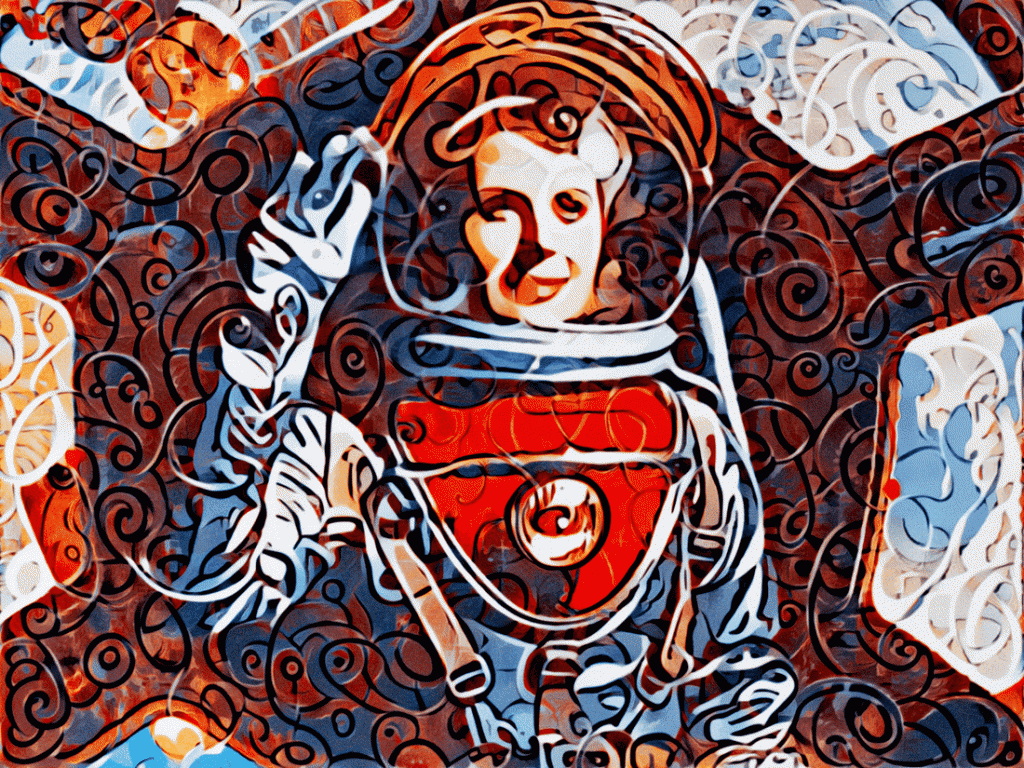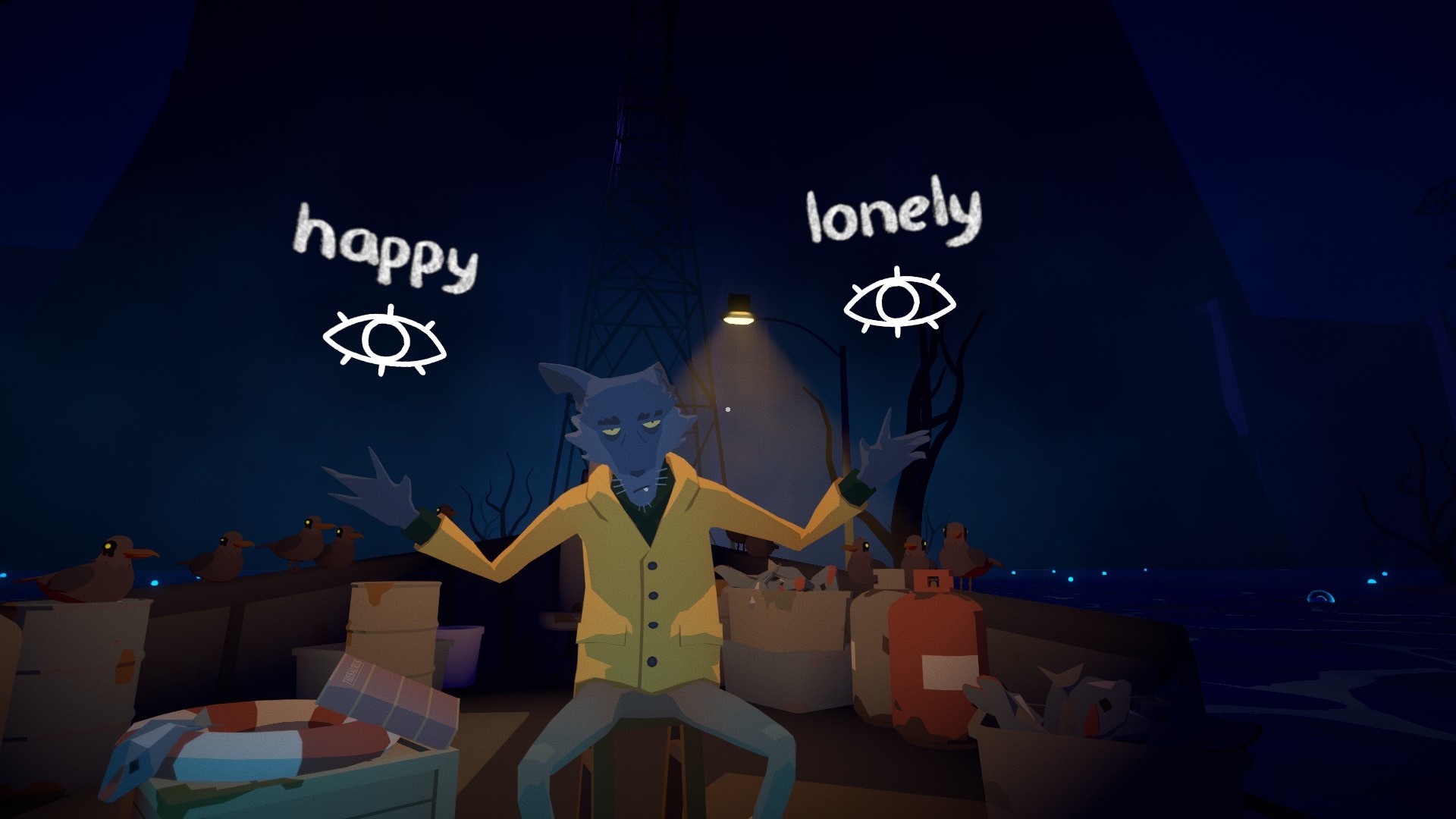The piece of artwork I’ll be evaluating is an audio-reative visualizer called “Red and Blue” from Max MSP Youtuber, AmazingMaxStuff. It’s a device you can import into an audio project, in my case music, and edit parameters to make visuals that react to the audio project. I’m not sure how long it took to create, though looking into the projects code, it must have taken at least a few days of work (after years of learning Max MSP). Prior works the creator could be inspired by include visuals for sound waves, as the the project itself is very representative of how many audio devices depict sound in motion. ‘Red and Blue’ opens a lot of possibilities for Max MSP audio-reative visualizers, as it’s a complex, but easily understandable device that allows for plenty of customization for music artists to create visuals to all their audio’s work. The device itself requires a purchase, but here is a link to the Youtube video showcasing the device.
Category: LookingOutwards-01
Looking Outwards-01
A creative computing project that I really admire are the Immersive Van Gogh Exhibits that have been in multiple cities. I love these immersive art installations because everyone there gets put into the art, surrounded by it, while also being told a narritive story with the works. These exhibites were designed by Massimiliano Siccardi in France, who has worked towards making projects like these for the past thirty years. To my knowledge, these installations were made by scanning Van Gogh’s paintings and using animation to then project them onto the walls. I think the creators would have been inspired by animatated works, but the invention in and of itself is fairly revolutionary. This opens up opportunities for immersive exhibits to be made for other artists as well, like people have already started doing with Monet’s works now. The purpose of these is to bring art to audiences everywhere in a new and exciting way, and it has been wildly successful.
https://www.immersivevangogh.com
LO: My Inspiration

There is this generative artist and software developer Lulu xXX who created this work of art called “Take me to the moon”. I don’t know how long it took them to make it but they design intimate and feminine artwork focusing on using 3D modeling and CGI. They build their own tools using custom/open-sourced code. They focus on beauty and iconography, which uses these visual images and symbols and helps us study the interpretation of them. Further, they use “optical flow analysis” to capture motion in their art and start generating this pixel aesthetic. I think this type of computational art is super important in understanding how activism and aesthetics and technology work together. Especially in modern times, its further important to look at how we can express women and cultures in a way that’s expressive and beautiful.
SydneyCha-LookingOutwards-01
Before Your Eyes is a VR game where the player blinks to progress through the game. The gameplay itself is extremely simple, but the story is striking. While some games rely on high quality graphics or intense gameplay for entertainment, Before Your Eyes is an immersive, bittersweet story that lets players experience the life of the protagonist through their own eyes. The game not only made me emotional, but left me with a lasting gratefulness for the undefined time I’ve been given to live.
The idea for the game started in 2014 with Will Hellwarth, a student assistant for an intro-level game development course at the University of Southern California. The initial project was presented at a game fair by Hellwarth and assisting developers and was later picked up and developed by GoodbyeWorld Games. The final game was published by Skybound Games in 2021.

Though VR gaming had existed for a while, Hellwarth invented a new approach by toggling with a previous game to respond to the player’s eye movements using the VR headset’s built-in camera. This inspired the idea for his game, which was initially called Close Your.
The story was influenced by the play Death of a Salesman, which has a similar theme of progressing the story through the protagonist’s earlier memories after his death.
Below is a link to the Steam site where the game can be purchased.
https://store.steampowered.com/app/1082430/Before_Your_Eyes/
Lo My Inspiration
Just Dance is a party game staple that has reached millions of users worldwide with just one instruction: just dance! I admire the intention of the game, which is to allow users to have fun gaming without having to slouch on the couch for hours. As someone who plays various games with friends, I appreciate when they don’t cause me back and shoulder pain. Additionally, I remember being absolutely amazed by the movement tracking my first time playing, and wondering how the game knew when I was lifting the wrong arm or kicking too
late (I’m not the greatest dancer). Just Dance was created by Ubisoft Paris in six months using Perforce Helix Core, a commercial software they have been using since 2001. The creators were inspired by Dance Dance Revolution, another popular dancing game that had players stepping on arrows to the beat of music. The body tracking in this game points to the potential of technology that extends to a variety of fields, including games, animation, health, and education.
https://justdancenow.com/
Ubisoft 2009
Reference: Parkin, S. (2013, October 27). The science of just dance. Eurogamer.net. Retrieved September 2, 2022, from https://www.eurogamer.net/the-science-of-just-dance-article
LO: My Inspiration
The technological art/game that I admire the most is the pokemon series, especially the first pokemon game ever – Pokemon red and blue. The first reason that I admire it the most is that it is first of its kind, a capture and collect JRPG game, and the second reason is that the developer secretly hid one easter egg inside the game which made the game super popular. The game itself is created and directed by Satoshi Tajiri using the C++ language on the gameboy platform, and according to the director, Tajiri himself, the game was influenced by another JRPG game called The Final Fantasy Legend. Because of the unexpected popularity that the game received due to its unique gameplay, art style, and merchandise, the team is able to create dozens of its squeals even till today.

Looking Outwards 1: Santiago X
Santiago X Flux Room
I admire this project because it utilizes technology’s advantage of auto-generation in order to create a more immersive and varied experience. The variation and illusion of natural spontaneity within a certain context can be very well emulated in this Flux Room because its injecting elements into the room that directly affect an experiencer’s senses.
Santiago X, a technology and installation artist, created it. I can’t find how long it took, but I assume 1-3 years since it probably needed a deadline for its showing in WNDR Museum, Chicago in 2021.
He most definitely wrote custom scripts, at least, because its a customized AI and machine learning system that algorithmically generates sounds, visuals, and scents in this Flux Room.
Definitely seems like one of those recent trendy immersive projection experiences like Artechouse or Van Gogh Exhibit, but it builds on those by adding more ways of sensuous interaction.
As a futurist, Santiago precisely wants to imagine and present hyper-real futures that rupture what we can presently conceive in reality. Thus, like Artechouse, there’s infinite possiblity for the types of unimaginable auto-generated visuals, but also sounds and scents that are utterly unrecognizable but in the liminal space between existing and not-existing.
Provide a link (if possible) to the work, and a full author and title reference. https://santiagox.com/flux-room
https://santiagox.com/aboutx
Blog 1
As a highschooler in Silicon Valley, it was inevitable for my family to have tons of family friends that are very well involved in the CS scene, despite my family not having any computer or engineering backgrounds. One of our closest friends, Fengwei Lee and his startup, REALITEER, developed a series of VR/AR programs that aimed to use VR/AR to promote mental and physical well-being. These programs included games that had you mimic taichi, dance, and other types of choreography to a selected audio track, with lightsabers that were used to hit targets as they approached you. There were specific programs within for different purposes, such as relaxation, exercise, dance, and kids’ entertainment. As far as I know, his startup and him took nearly two year experimenting with different strategies and codes. Furthermore, from the finished product, the project used various commercial applications, like Unity, and original codes. I assume that the project was inspired by the creator, Fengwei’s time working in companies like Dreamwork, and his own family. This was a way to entertain and help people of all ages from toddlers to seniors to feel better. Moreover, revisiting this project made me think about the future of VR/AR – that computer science can have a much more obvious and tangible effect on the general public’s well being, in this case, encouraging people to be active mentally and physically. I also predict that as society becomes more and more digital, with the creation of platforms like the Meta Verse, developing health promoting Virtual and Augmented reality is critical.
Link to the start up and it’s projects: https://realiteer.com/about/
LO: Kinetic Sculpture
Work title: Circe [Kinetic Wind Sculpture in Stainless Steel]
Designer: Anthony Howe
Video Link: https://www.howeart.net/circe
I am really fascinated by this project because Howe has endowed a new form of sculpture that is not a static artwork. The patterning of these sculptures also reminds me of parametric architecture, which is often created by Grasshopper (a 3D modeling program). Using specialized software that can program each component of the sculpture, Howe is able to generate the motion of steel plates through the wind. Then, the wind will allow the statue to perform based on its pre-designed structure. I believe that one of the artist’s responsibilities is to let the work speak for themselves, whether through interaction with nature or through computational control by us. Regarding the software, I suppose the author created his own scripts because every work in this series is unique in its form and motion, as well as the “wind” determinator, in this case, will require real-time data to implement the design in real life.
Looking Outwards: 01
Recently, I’ve been interested in photogrammetry, most notably 3D rendering and editing. I’ve gotten a chance to work with photogrammetry in the past, though I’ve been fascinated in implementing these 3D models into graphic design. Lucas Milner, who runs a blog under his name: (lucasmilner.com/180523blog), documents his 3D modeling projects and I’ve found his work mesmerizing. Photogrammetry is used as a quick modeling creation tool, so Milner didn’t spend too much time on this project. Photogrammetry works by taking pictures of an object and scanning them through a software. What one does next with this render is up to the artist. Metashape is a popular program to create these models. Milner used his 3D model in order to create an entirely different shoe design; seemingly inspired by the many elaborate shoe advertisements that we’re often exposed to. This project is a clear example of taking something simple and creating an original, repurposed work out of it. One can use a simple object to create something entirely new and inspirational for their broader audience. This is exactly how art is created: an artist always has an inspiration, and with that they can implement their own vision into the mediums they see fit. Discovering art from other artists is what has fueled my own passion for creating, and I hope to be that inspiration for someone else, as well.
![[OLD SEMESTER] 15-104 • Introduction to Computing for Creative Practice](https://courses.ideate.cmu.edu/15-104/f2022/wp-content/uploads/2023/09/stop-banner.png)